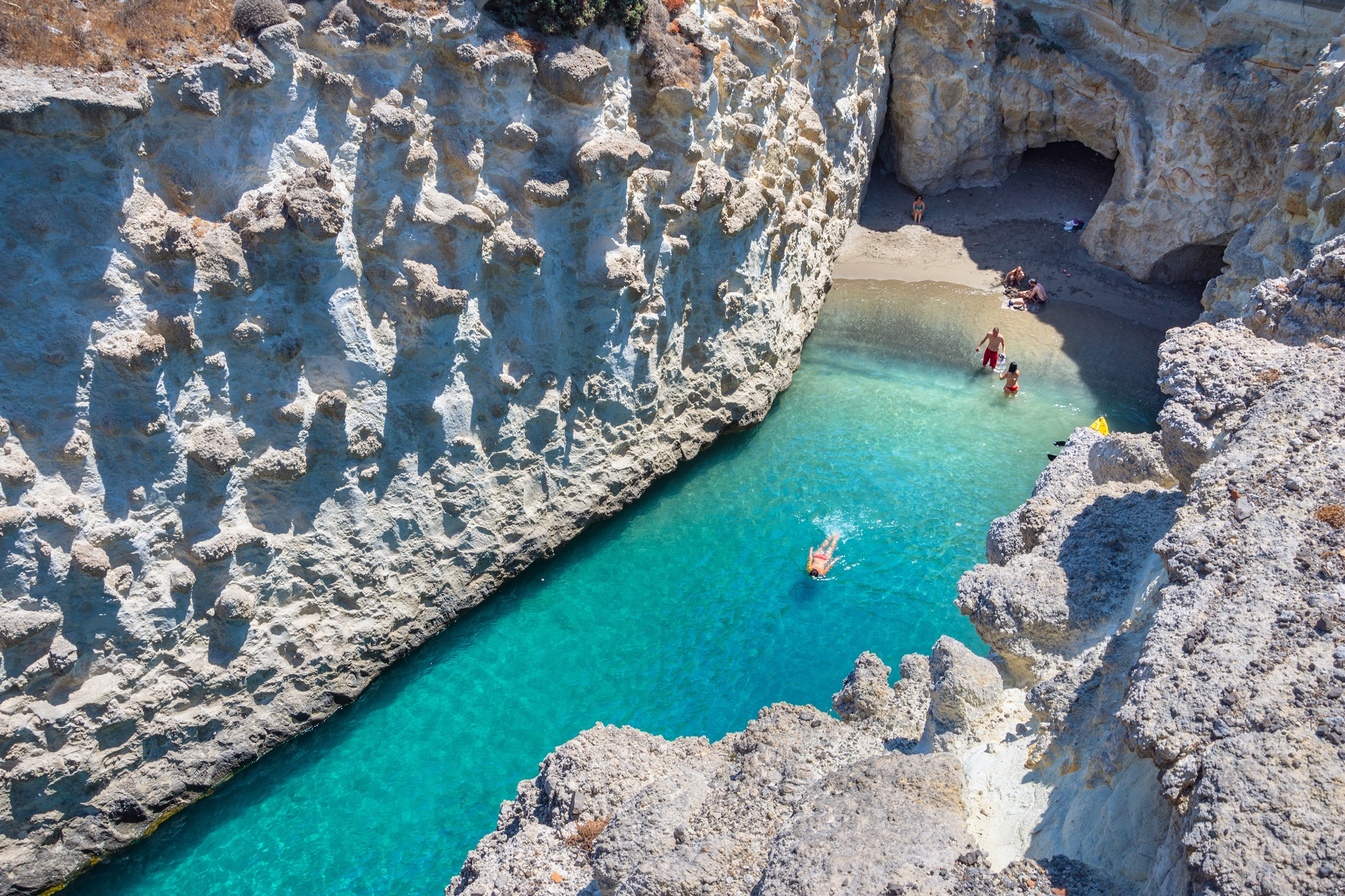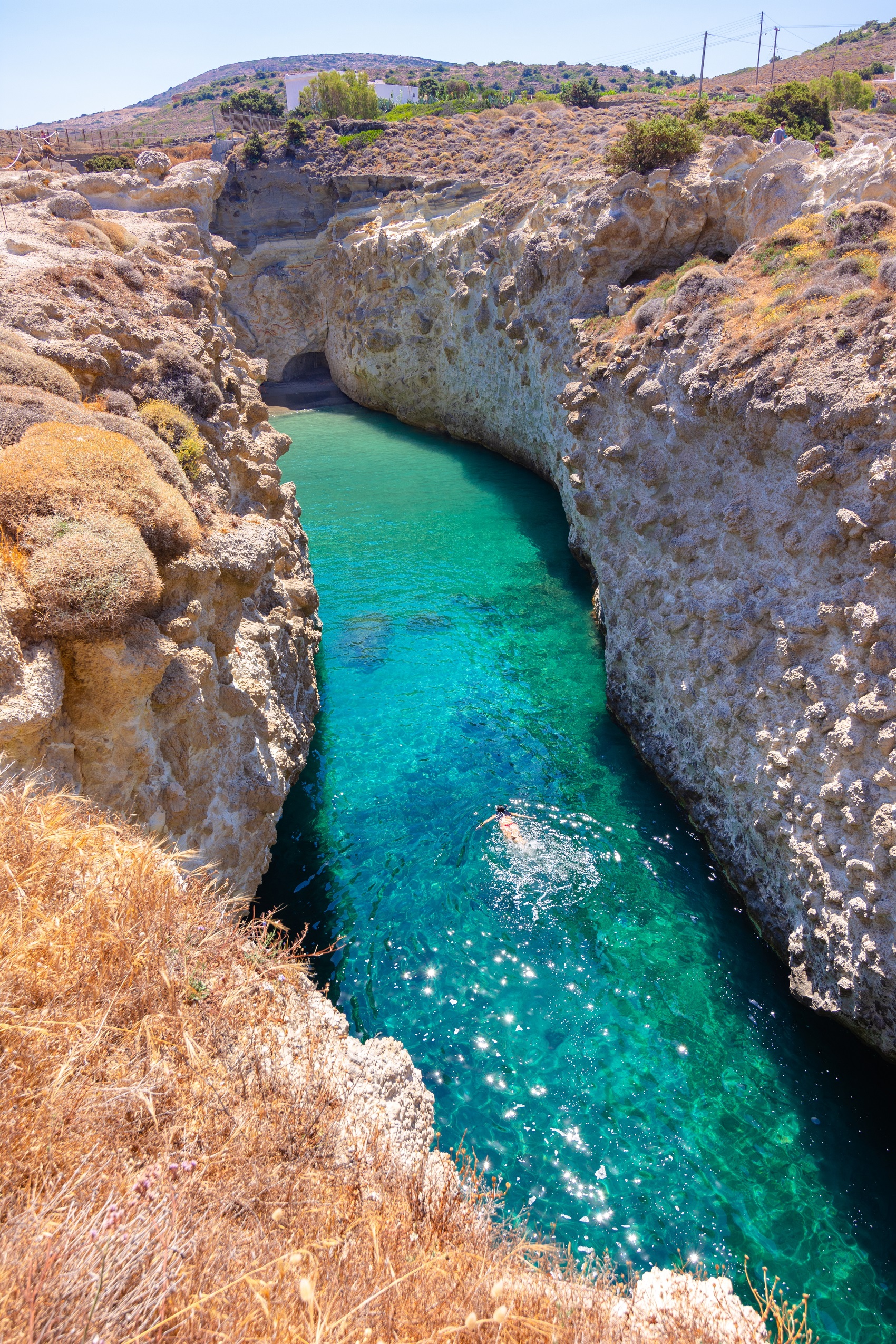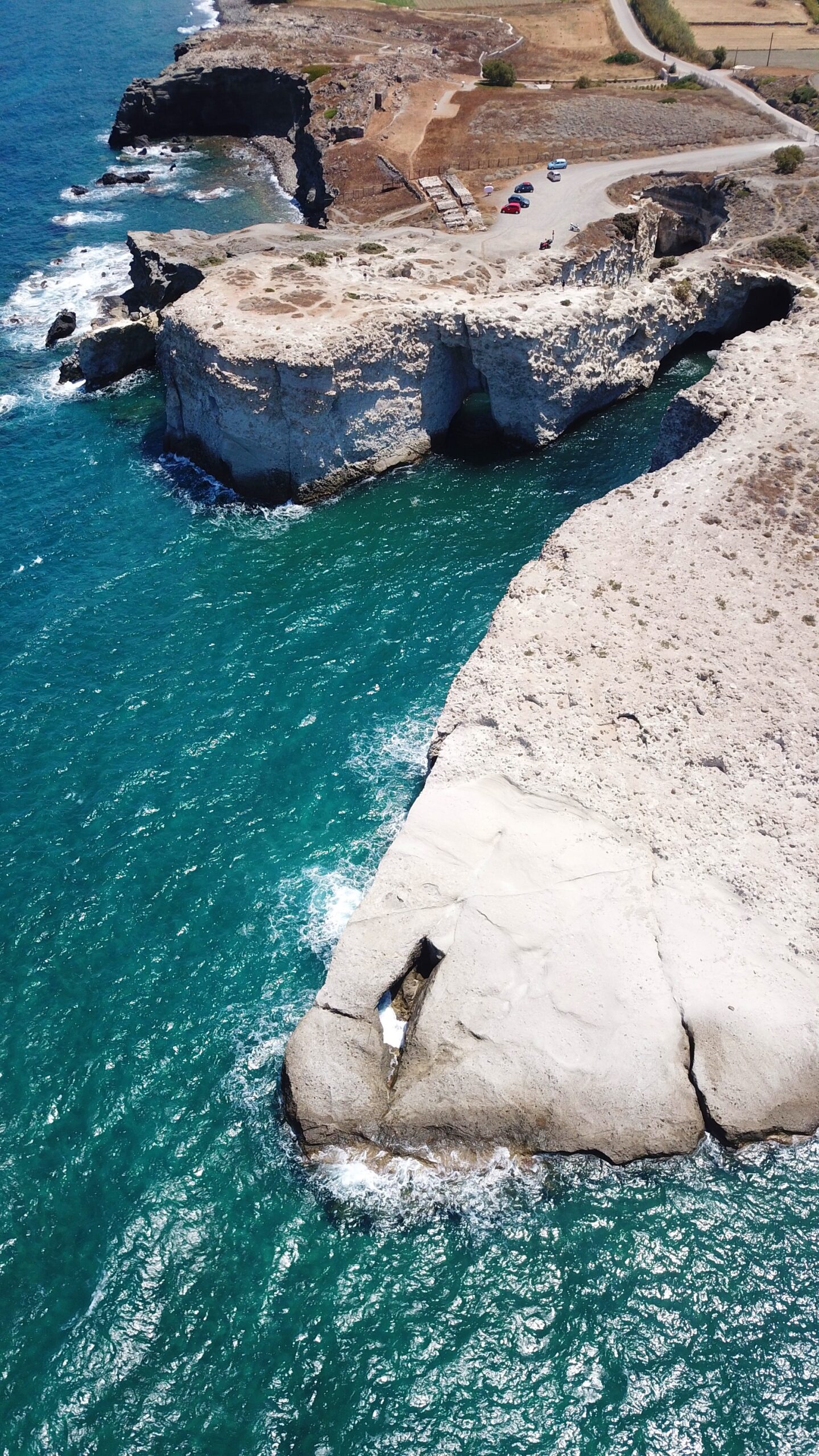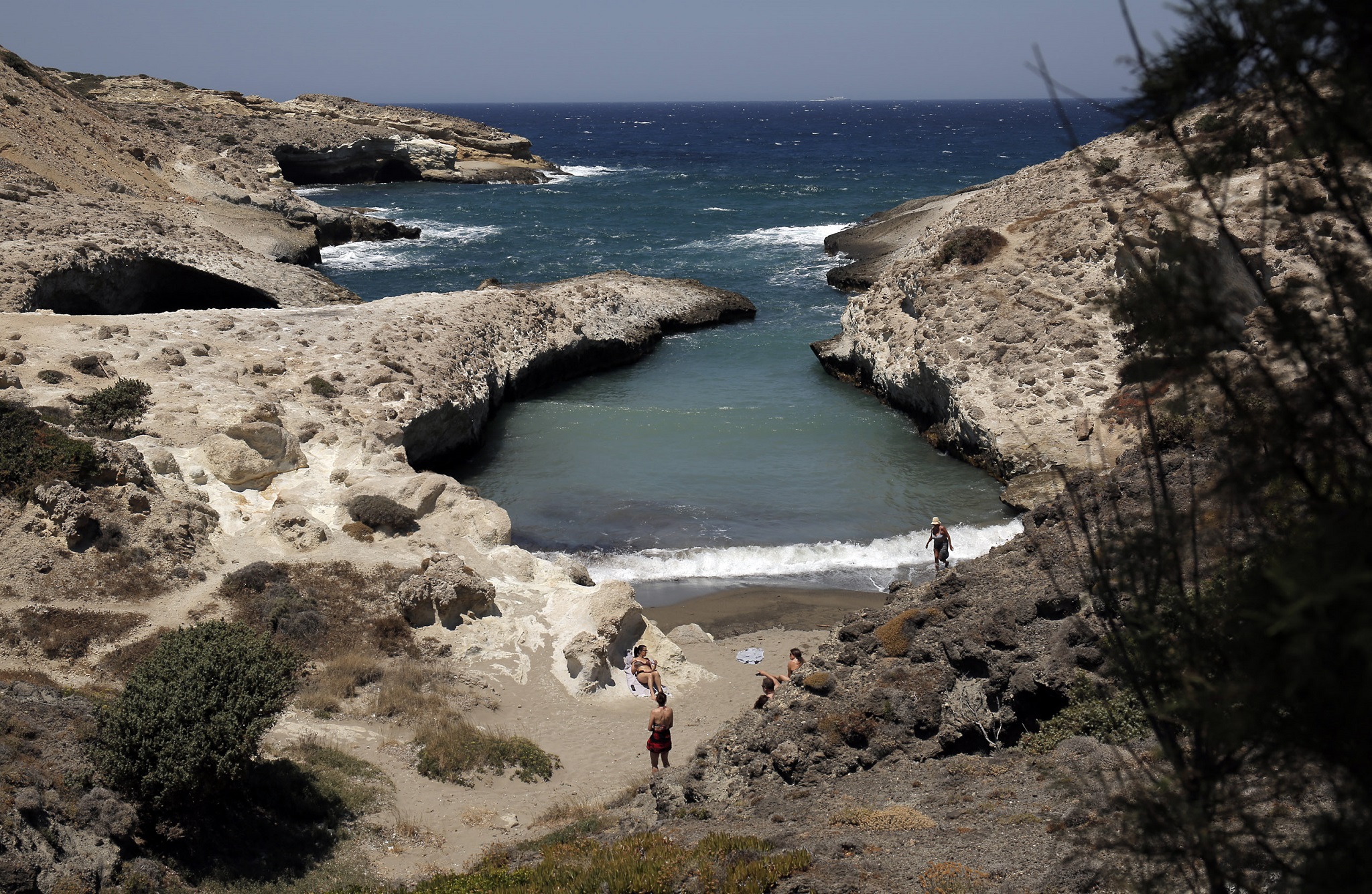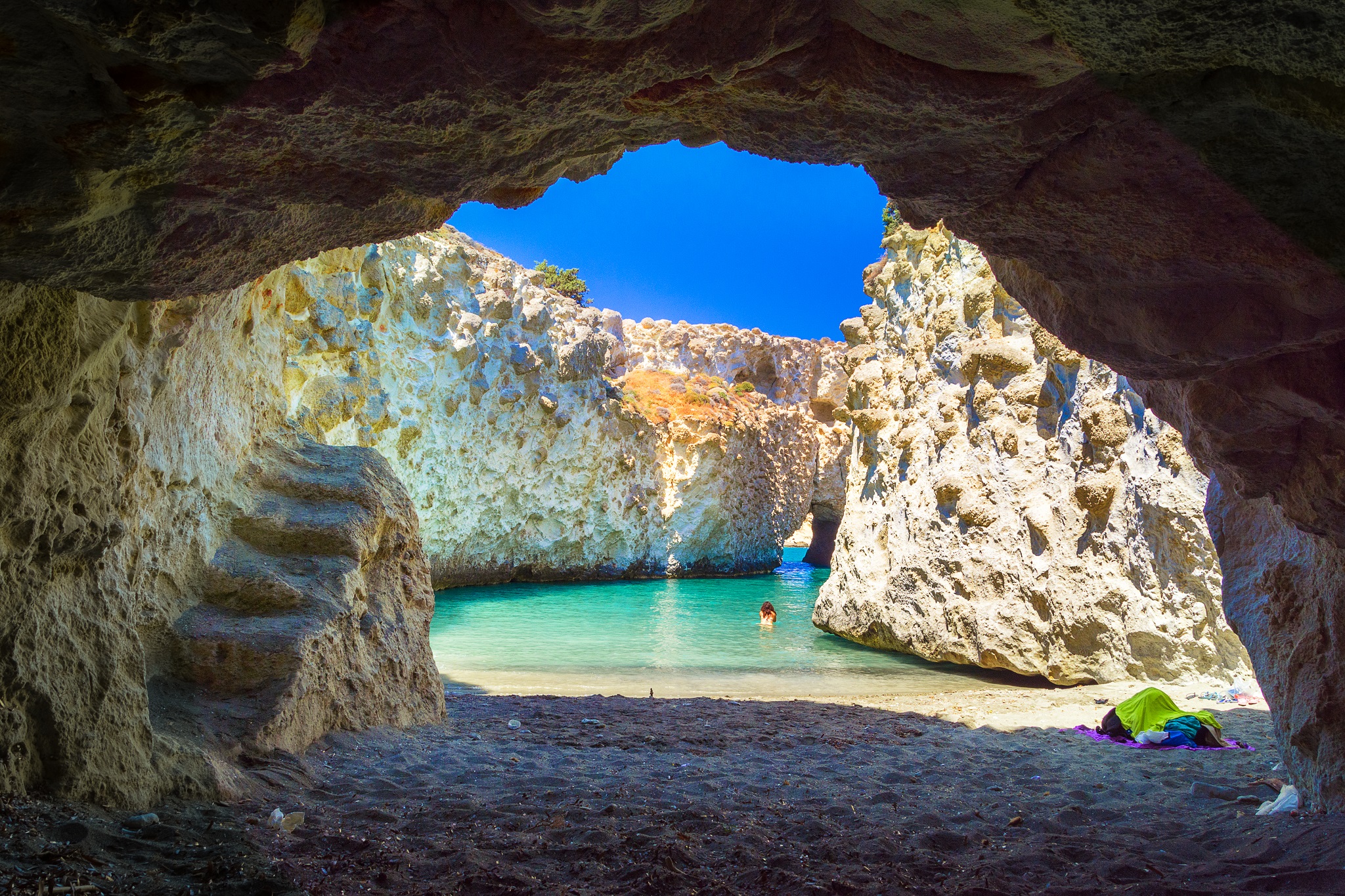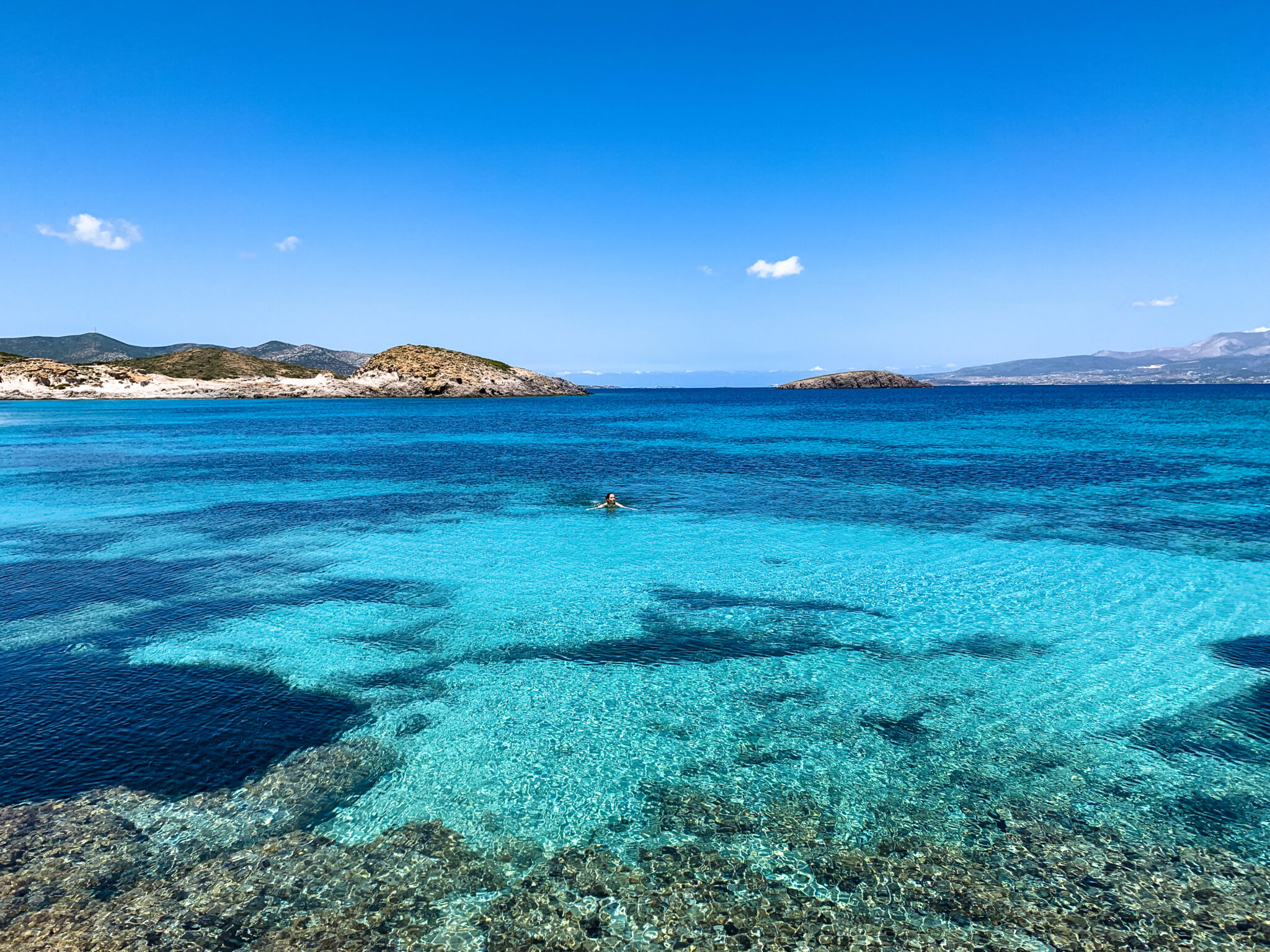At the Cyclades’ southwestern extreme lies Milos, a canvas of unique landscapes, painted by peculiar geology and volcanic heritage. This Greek island, renowned for its scenic beauty, harbors an impressive collection of beaches, reportedly around 75, celebrated as some of the Mediterranean’s most captivating.
The spotlight of tourism tends to gravitate toward Sarakiniko or other well-known coastlines like Firiplaka. Yet, it’s Papafragas, lesser-known but no less extraordinary, that provides a distinct experience. This cove embraces a tiny sandy beach, an expanse that coexists with caverns, azure waters, and geological curiosities.
A splendid marvel that never fails to astonish those who journey to Milos. Many come to explore the compact beach, some are intrigued by the neighboring historical prison, and others are drawn by both. However, this beach doesn’t cater to all, considering the challenges that lie in reaching it. Yet, many visitors are content to admire the singular coastline or capture its beauty in photographs.
Tales often tell of the “Papafragas’ cave”, but frequent visitors are quick to clarify—it isn’t just one cave. Nor does it carry the name “Papafragas”, contrary to what some sources suggest. As local lore goes, this name traces back to the last Catholic priest of Milos, reputed to have anchored his boat in the bay’s natural refuge.
Yet, overshadowing all these details is the awe-inspiring landscape itself. A testament to the enduring power of nature, Papafragas reveals thousands of years of coastal erosion, with the wind and sea carving the towering, grey-white rocks. The resulting otherworldly terrain, reminiscent of lunar landscapes—with the addition of water—is striking. Its historical appeal as a pirates’ sanctuary during medieval times is hardly surprising.
This unique environment shaped a small bay, delineated by slender land strips and multiple gaps in the vertical cliffs. Its defining features are the immense caves at the coastline. A third, imparting the illusion of a “swimming pool”, is marine and accessible only by swimming. The deep waters cast a mesmerizing turquoise glow, augmenting the idyllic setting. Close by lies another small beach within a cozy, sheltered cove—Kapros, often mistaken as part of Papafragas.
Planning a swim at Papafragas? Remember that in peak summer, you won’t be alone. Its sandy area, albeit small—barely extending five meters—is compensated by the two sizeable interconnected caves providing additional room. Come August, when northern winds pick up, the waves can become quite unruly, not unlike other northern beaches of Milos. Swimming here requires care to prevent being swept away.
Papafragas sits on Milos’ northern side, within proximity of the tourist hub of Pachaina, on the way to Pollonia, and close to the famous archaeological site of Phylakopi. After leaving Pachaina, the road towards Triovasalos-Apollonia reveals Kapros first, then Papafragas. The designated parking area overlooks the beach, marking the start of a mandatory descent.
The path to the beach is carved into the rocks and demands care. Walking with caution—preferably in trainers—is advised, given that some basic amenities may need to be carried since the beach lacks facilities. The ascent too calls for vigilance. At the rock end, small steps guide you to one of the cave entrances, the sandy expanse, and the stunning turquoise waters. During the descent, don’t shy away from passing your bags to swimmers heading up—it’s a common courtesy extended to visitors here.
Read also:
Discover the Vibrant Cafe Culture on the Island of Milos
A Guide to the Best Beaches on the Island of Milos
What to Uncover on the Cycladic Island of Milos



